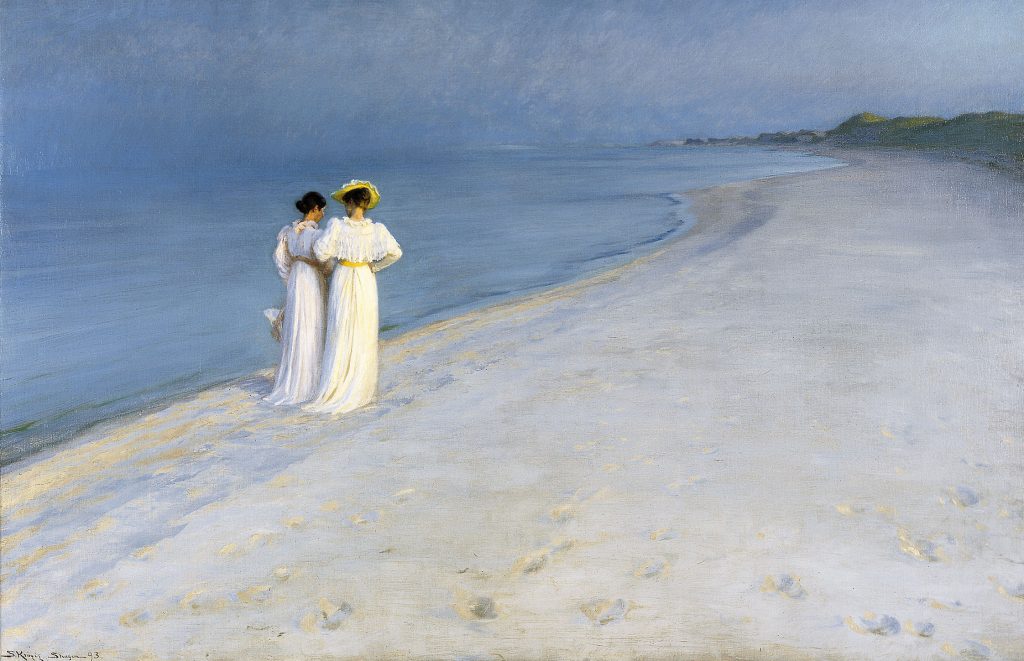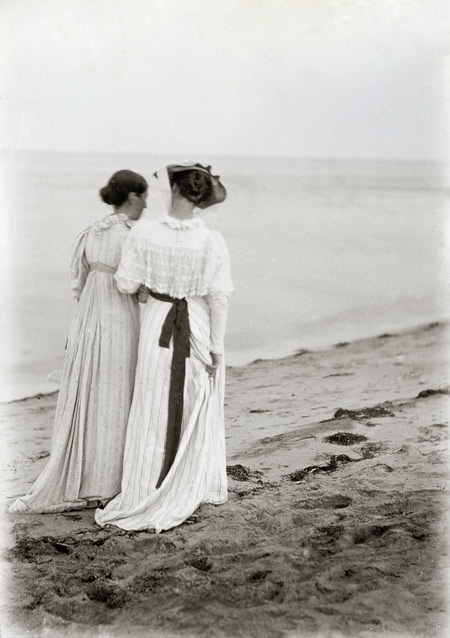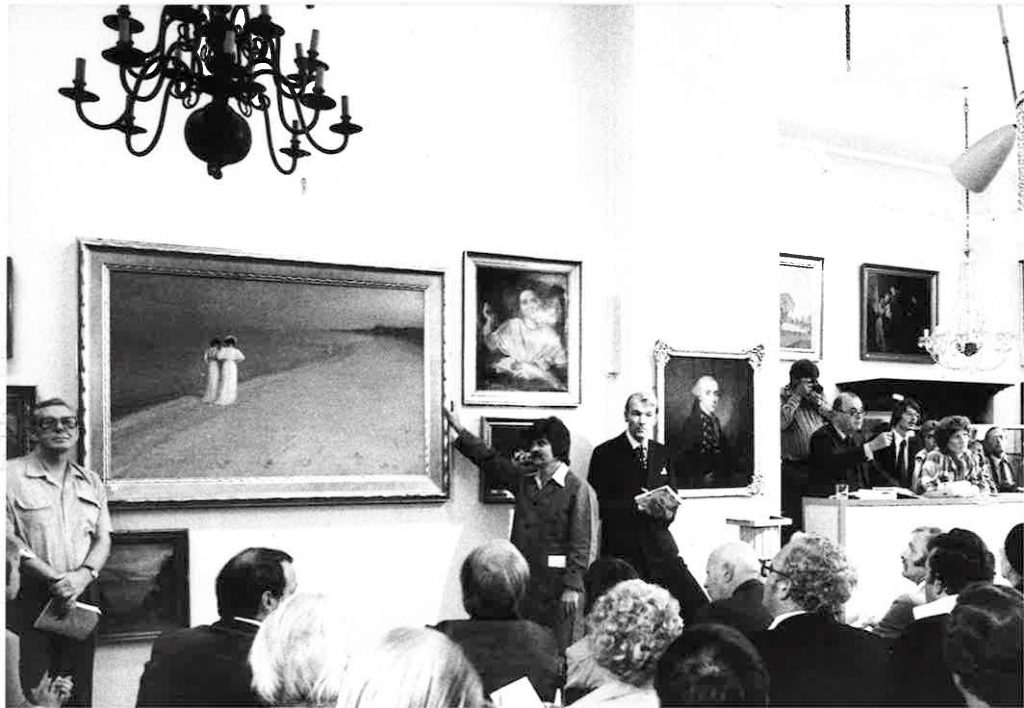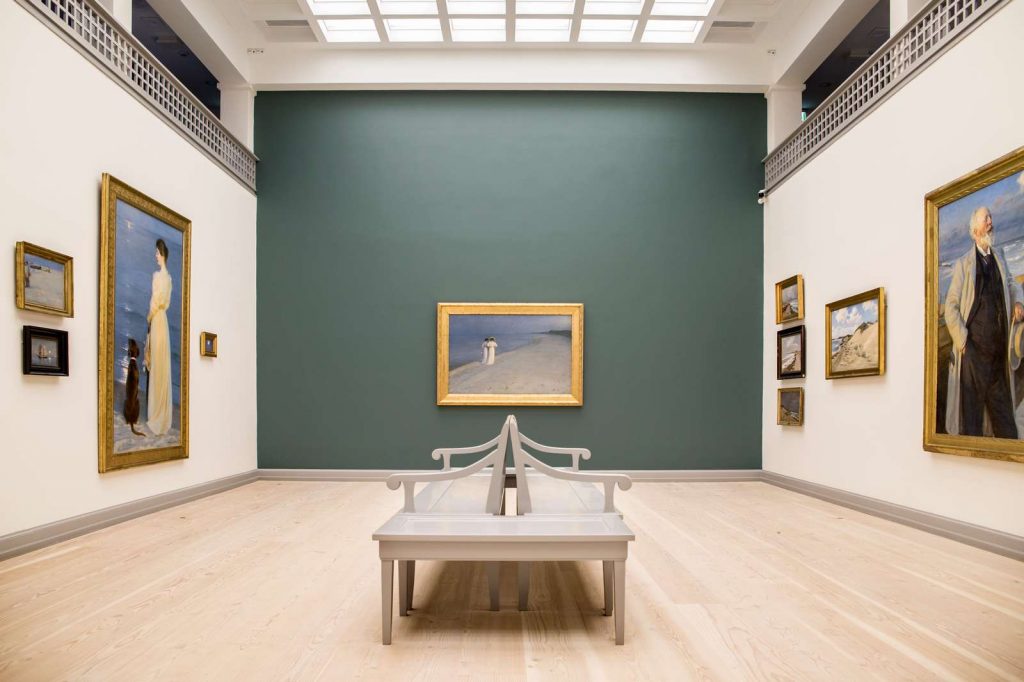‘Summer evening on Skagen Sønderstrand’ is one of Peder Severin Krøyer’s best known paintings and one of the most popular paintings in the collection. On August 29th we celebrate that it is 40 years since the museum lost the winning bid for the painting at auction. Sorrow, however, soon turned to joy when the museum received the painting as a very generous donation in a surprising turn of events.

Krøyer’s summer evening
This year, it is 125 years since the Danish artist Peder Severin Krøyer made one of his best-known paintings, Summer evening on Skagen Sønderstrand.
Krøyer got the idea for the painting the year before in 1892 when the Danish poet Sophus Schandorph and his wife, Ida Sophie celebrated their silver wedding anniversary in Skagen. Several of the couple’s friends had gathered for a celebration in Mrs Bendsen’s cottage, which was then occupied by Marie and Peder Severin Krøyer. After dinner, the party continued down to the beach to enjoy the evening. Krøyer was sitting in the dunes with other guests, including the Schandorphs, when he saw the painter Anna Ancher and his wife Marie walking along the shoreline.

Krøyer worked with different variations of the motif and used photographs as reference while working on the painting. According to Krøyer, it took him four days to paint the final version of the artwork. To begin with, he worked with a composition in which the two women were in the picture’s background, but in the final work, he positions them further forward on the left side of the picture.
Krøyer was – like many other artists of the period – very interested in depicting twilight, the so-called “blue hour,” when day becomes night and the darkness of night blurs the details. From the 1890s and until his death in 1909, he painted many works in Skagen during the blue hour. It was precisely his ability to depict this atmosphere that he was praised for when the painting was exhibited at both the Salon de Champ-de-Mars in Paris and at the Munich Secession in 1895.
1978. The painting resurfaces
In Munich the painting was bought by the German soprano Lilli Lehmann and disappeared from public view after this. It was only in 1978 that the painting resurfaced for sale at Bruun Rasmussen Auctioneers in Copenhagen. The work was valued at DKK 125,000-175,000 and the museum’s director, Knud Voss asked for help from foundations and private businesses for funding to acquire the painting. In Skagen, collection boxes were even placed in local shops to help raise funds.
With a great deal of attention from the media, the artwork was sold for a staggering DKK 520,000, the highest price bid for a work by Krøyer and for a work by the Skagen painters generally at the time.

The buyer however was the German businessman and publisher, Axel Springer, and not Skagens Museum. There was enormous disappointment in Denmark that the work had left the country. When Axel Springer realised that Skagens Museum had wanted to buy the work, he decided to donate it to the museum, on the condition that he be allowed to have it hanging in his home for 20 years. Springer died in 1985 and the following year his wife chose to donate the work to the museum.
When the work is exhibited, it is therefore credited as follows:
“Donated by the German publisher Axel Springer. Received in 1986. In memoriam and as thanks for the Danish rescue of Danish jews in 1943”.
A fragile artwork
When the painting was put up for sale in 1978, it bore clear traces of having spent many years in an Austrian mountain cabin.
The work was therefore given a comprehensive conservation, where the paint was affixed to the canvas by applying a glue and a supporting canvas on the back. This means that part of Krøyer’s original technique can no longer be seen on the painting’s surface.
When the picture was sent to conservation again in 2005, grains of sand was found on the surface of the painting. This indicates that Krøyer worked on parts of the picture while he stood on the beach. The sand on the painting’s surface and the conservation history of the painting mean that the work is particularly vulnerable. To protect that painting as much as possible, the work is now mounted behind glass in a special build frame. This extra protection creates a closed climate inside the frame. The glass and the hard backing, which is mounted behind the frame, ensures that the painting is not exposed to shock during transportation and hanging.
